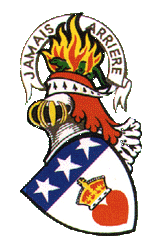This page is a stub - you can help
complete it
In April 2016, it was announced that Rembrandt’s
‘Catrina
Hooghsaet’ which has been at the centre of a storm over UK export rules,
is going on loan to National Museum Cardiff for three years. The
painting will go on public display later today, 5 April, in the Welsh
museum’s Dutch gallery.
The work had hung at Penrhyn Castle, in
north Wales, since 1860. [Last summer], it was sold privately through
Sotheby’s to an unidentified foreign buyer for £35m.
The
anonymous owner of the Rembrandt now says that they are “very happy to
be able to share the enjoyment of this great painting with the public by
lending it to the National Museum of Wales”. According to a spokeswoman
for the museum, the previous owner of the Rembrandt, Penrhyn Settled
Estate, is donating £10,000 to fund an educational programme for the
display of the portrait.
The paintings at
Penrhyn Castle were almost entirely
bought by Colonel Edward Gordon
Douglas-Pennant, 1st Baron Penrhyn of Llandegai (1800–1886), notably
Dieric Bouts’s ‘St Luke drawing the Virgin’.
At the advice of
Belgian dealer C. J. Nieuwenhuys (1799–1833), he acquired
seventeenth-century Dutch paintings including Rembrandt’s ‘Catrina
Hooghsaet’, Venetian sixteenth-century religious paintings, like the
‘Sacra Conversazione with Saint Jerome, Saint Justina, Saint Ursula and
Saint Bernardino of Siena’, now attributed to Bonifazio de' Pitati
(Verona 1487–Venice 1553) and Spanish seventeenth-century works,
including a ‘Two Figures at a Table with Kitchen Utensils’, recently
revealed to be by Antonio Pereda y Salgado.
In the nineteenth
century the family wealth came from the Welsh estates, mainly the slate
quarries, the major one of which is depicted in Henry Hawkins’s ‘The
Penrhyn Slate Quarry’.
In 1899 the 2nd Lord Penrhyn had the
pictures cleaned and rehung by Sir Walter Armstrong, Director of the
National Gallery of Ireland and they were catalogued by his daughter,
Alice Douglas-Pennant.
It is a rare example in Britain of a
nineteenth-century collection that has survived virtually intact, in
situ, and in family ownership. The art collection is the property
of the Penrhyn Settled Estates Trust. This operates on behalf of the
Douglas Pennant family – the Rembrandt’s ultimate owners.
The
family are the original owners of the castle and poet Richard Douglas
Pennant, one of the trustees, continues to live in its grounds with his
wife Georgia, although the 19th-century folly itself is now owned by the
National Trust.
In 2004 the Douglas Pennant family sold The
Burgomaster of Delft, by Jan Steen, which is two years older than the
Rembrandt, to the Rijksmuseum for £8.1m.
And when Lady Janet
Pennant Douglas, the head of the Penrhyn family died in 1997, the family
parted with Canaletto’s View of the Thames near Westminster and View in
Venice by Bernard Bellotto in lieu of inheritance tax.
Also
in Penrhyn Castle, a 15th-century devotional painting by the influential
Netherlandish artist Dieric Bouts was made subject to an export bar in
order to prevent it leaving the UK in November 2015.
St Luke
Drawing the Virgin and Child by Dieric Bouts's distinctive painting is
the only example of St Luke drawing the Virgin Mary and Christ by a
northern European artist on display in this country.
 |
It is not clear if this portrait
of Anne
Villiers is in Penrhyn |
See also: Penrhyn Castle
The Douglas-Pennant Family
|


